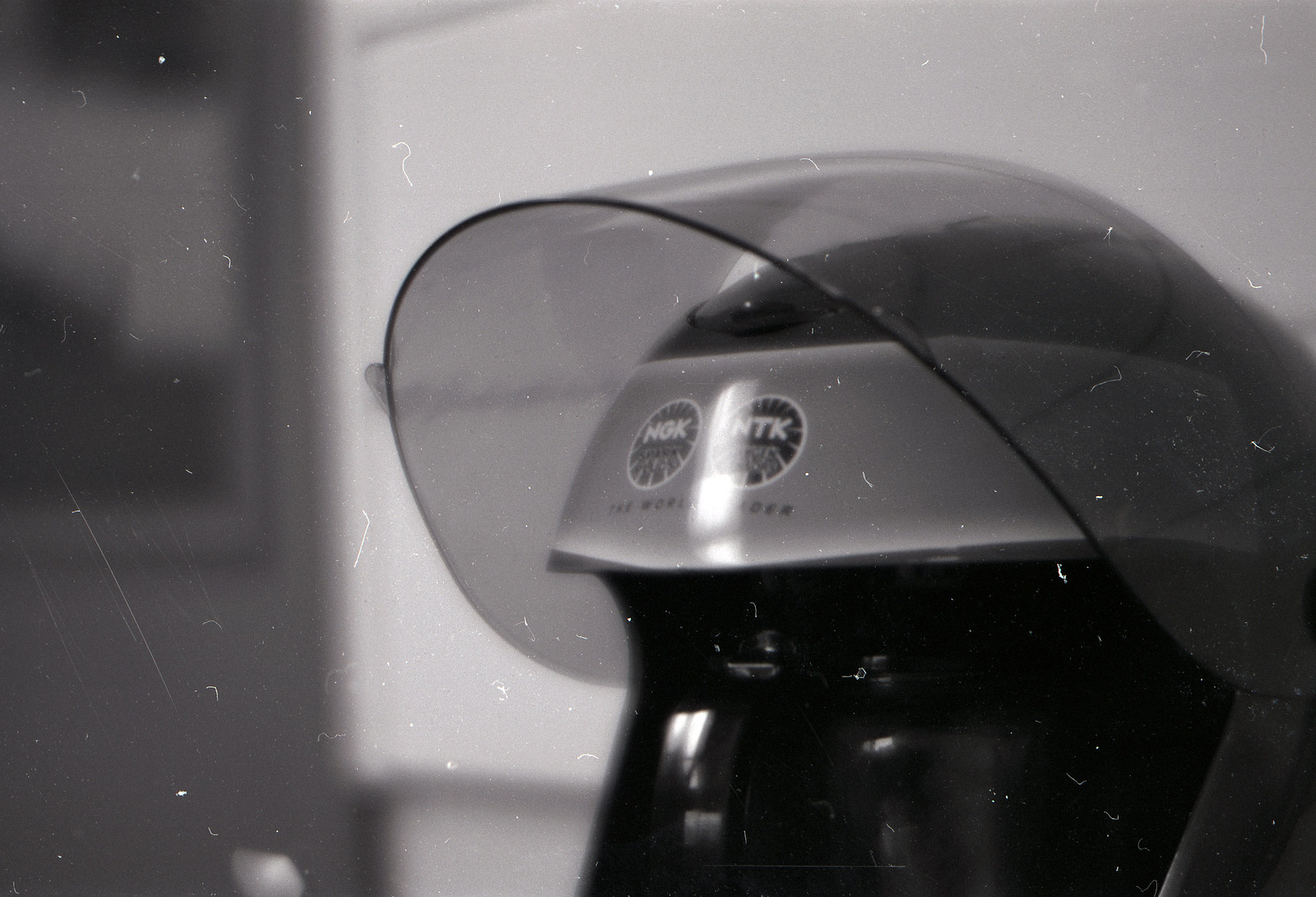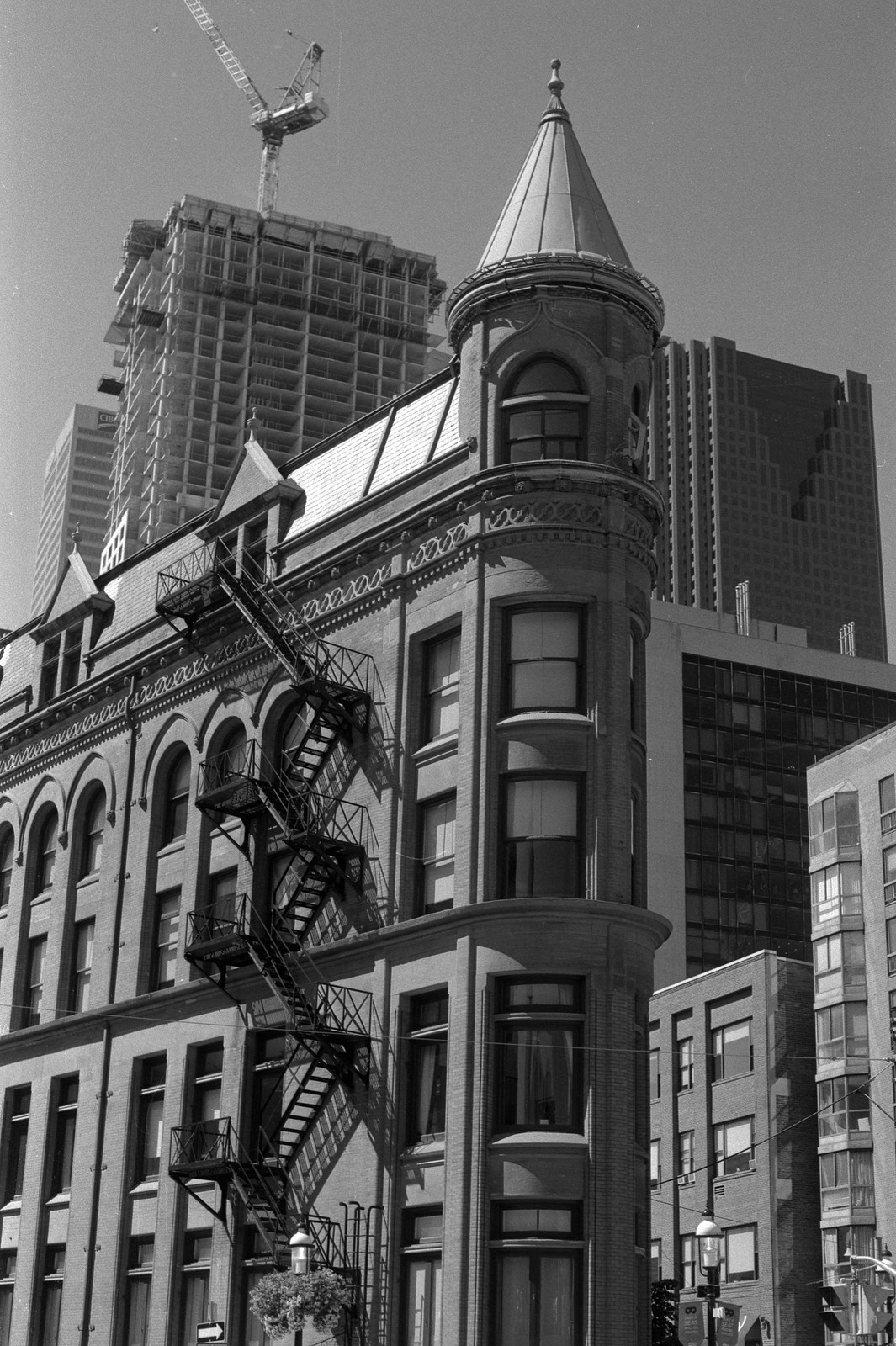I’m a sucker for mechanical match needle SLRs. They’re simple, elegant and great to learn on and even now still a joy to shoot. The FT3 is just that, an easy to use, fun camera that can if needed double as a self-defence weapon. The sad part is that the FT3 only was made for a few months before being superseded by the Nikon FM. A unique creature among the more-consumer-oriented Nikkormat lines the FT3 can use AI and AI-S lenses even if they don’t have the coupling claw. Sadly you won’t be able to use the Non-AI glass that many Nikkormat shooters love.

Camera Specifications
Make: Nikon
Model: Nikkormat FT3
Type: Single Lens Reflex
Format: 135 (35mm), 36x24mm
Lens: Interchangeable, Nikon F-Mount
Year of Manufacture: 1977


Background
Nikon had not done well with the Nikkorex line of cameras to break into the consumer market. A market already held by the likes of Canon, Minolta, and Pentax. But the 1965 release of the Nikkormat FT marked a major change. The Nikkormat provided photographers with a camera as well built at the professional level Nikon F, and while it lacked some features of the F, it was built to the same exacting standards. And it even had the same metering system as the Photomic head. Nikon also released an unmetered version, the Nikkormat FS. The FT proved popular enough that Nikon released an updated version in 1967, the Nikkormat FTn. The FTn included several upgrades, including a far better centre-weighted metering system using the classic 60/40 ratio. The FTn also could support lenses with apertures between f/1.2 and f/32. A minor update in 1970 provided an improved mirror box reducing mirror rattle that became iconic in earlier versions. The FTn saw production for nearly ten years before being replaced by the FT2. Nikon only changed one thing between the FTn and FT2, and that was the battery power, going for the newer and safer silver oxide. The FT2 also provided a permanently affixed hot shoe on the top of the prism. And the last change was the inclusion of a Type K focusing screen. In 1977 Nikon released the final integration of the mechanical Nikkormats, the FT3. Again, the FT3 was mainly another update to the FT2; the main update is the capacity to use aperture index (AI) lenses. So unlike the earlier Nikkormats, you didn’t need to use the mechanical claw to communicate the aperture to the camera’s meter. Sadly, the world had by this point moved on from the massive mechanical tanks, the smaller form SLRs were becoming popular with the Olympus OM-1 and Pentax ME. The FT3 saw cancellation after only a few months in production. The shortest camera run in the entire history of Nikon, replaced by the equally capable Nikon FM later in 1977. Although you could still get new FT3 bodies into 1978.


Impressions
The FT3, like all Nikkormats, follow the same basic design. It’s big, heavy, completely unrefined, but strangely beautiful. And my FT3 looks as it has been through the wringer, with plenty of brassing on the black finish. Honestly, I think the camera would look a bit better in a silver finish rather than all black. It’s still an excellent looking camera. The FT3 feels like a 1960s Nikon, however, there are some notable differences. First and foremost is the location of the shutter speed dial, which is not on the top plate but rather on the lens mount. If you use the OM system from Olympus, this is no real issue, but for me, it did make for a bit of a learning curve. Thankfully these days it isn’t too bad as I have an OM-2n, so I’ve become familiar. Everything else is just perfect, from the lovely big shutter release and the updated film advance lever. The leaver now has a more ergonomic feel than the flat metal of the earlier Nikkormats. These aren’t the lightest of cameras, so you do want to have a good strap and camera bag to haul everything around in, but if you’re used to that sort of camera, it is of no real bother.


Experiences
The camera is simply a joy to use, as Nikon likes to say, it is pure photography. I have to say I rather enjoyed working with the FT3, simple and easy to operate. Loading the film is easy, nothing fancy needed to get it loaded. Mounting and dismounting lenses are equally simple since it supports AI; you no longer have to do the aperture shuffle to get everything aligned properly. The match needle system makes setting the exposure simple. However, my copy has the jumpy needle issue, which did make setting the exposure a little difficulty. But as a mechanical camera, I simply switched to sunny-16. Thankfully this issue has since been fixed by the current owner of the camera. The only trouble I faced with the camera that proved difficult was the location of the shutter speed, but that was because I was not used to the position. Another issue that I have since resolved by getting into the OM system.


Optics
While I don’t need to sell you on Nikkor optics, if you’re already into the Nikon system, then you know what you can get from the lenses. But the main reason you’re going to want to get an FT3 is the fact that it does support AI lenses. And while you can use your AI and AI-S clawed lenses on earlier models Nikkormats, if you run with Type-D AF lenses or Series E they won’t work on those early Nikkormats, but they’ll work perfectly on your FT3. As you can see, I was able to use a Lomography Daguerreotype lens that uses water-house style aperture, and yes, the camera metered just as easily with a proper AI-S lens mounted as well.


Lowdown
Any Nikkormat camera will do you well and honestly, makes for an excellent everyday shooter and travel camera when you want something rock solid and mechanical. But you want to take a close look at your lens collection before choosing your Nikkormat. And while these cameras are getting on in age, they still make for an excellent choice. The one thing that most Nikkormat’s will start to suffer from is a jumpy meter; mine certainly had that issue. But thanks to Johnny Martyr, who pointed this out a simple cleaning will take care of the build-up of corrosion. Which thankfully my good friend Bill Smith (who got my FT3 when I downsized) has done, and it now works perfectly. It also shows how dead-on reliable the cameras are in the long run.


Further Reading
Don’t just take my word on the Nikkormat FT3, you can check out the reviews by other awesome camera reviewers!
Nikonians – Nikkormat FT3 Review
Photographic Hardware – Nikkormat FT3
Vintage Camera Lab – Nikkormat FT3
Johnny Martyr – Nikkormat, Brutish & Beautiful